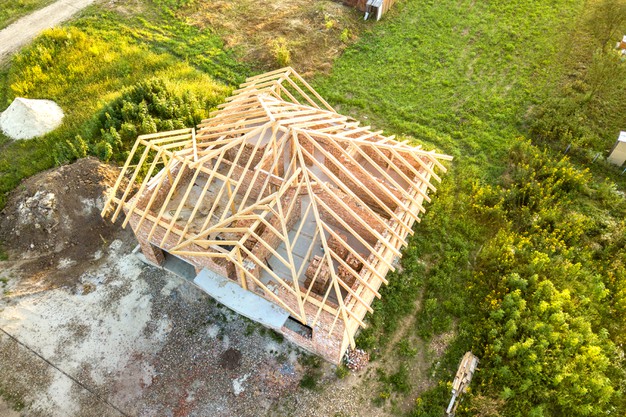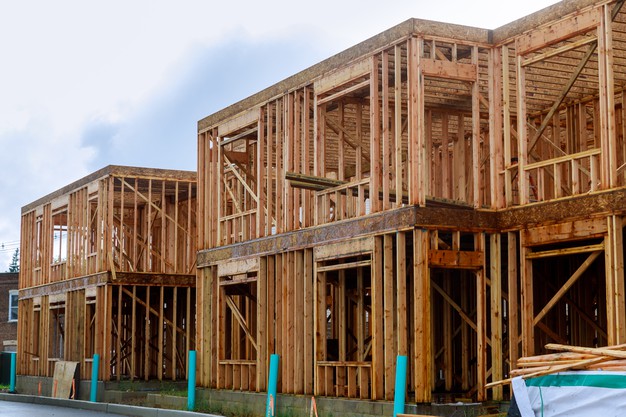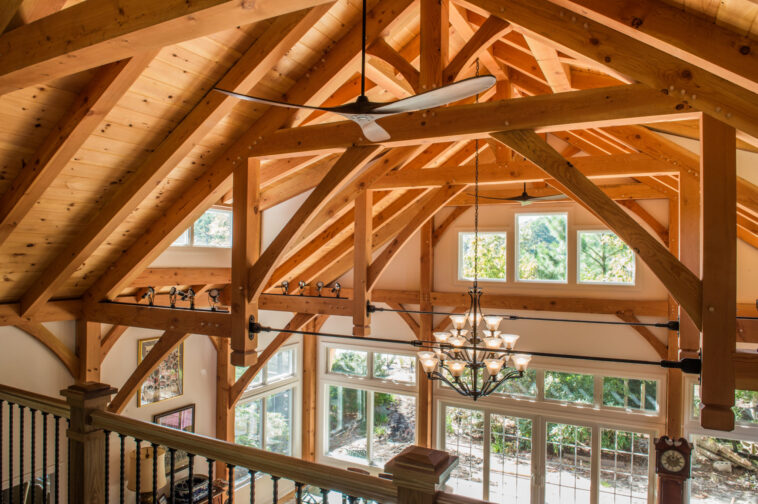Timber has been used to build houses since a long time ago. Homes made out of timber are widely found across the world. There are numerous reasons as to why people build such houses.
Timber homes generally are structured with large beams and posts, which are joined with the help of pegs and other supporting structures. Also, these houses are strong and quite durable. One of the significant advantages of timber houses is that they don’t require long-bearing walls, which means that you can design the house in whichever configuration you wish. If you also wish to construct a timber frame house, make sure to contact Hamill Creek Timber Homes.
It all sounds good up till now but are timber frame houses worth it? Are they worth your time, effort, and money? In this post, we will discuss some of the advantages of timber frame houses that will help you decide whether you should invest in timber houses or not.
Reasons Why You Should Build Timber Frame Houses:
High Construction Speed

This is one of the most significant advantages of building timber frame houses. They take less time to construct as compared to traditional brick houses. If the construction work finishes fast, the homeowners get enough time to concentrate on other interior works like electrical wiring or plastering. Thus if you don’t have much time to spend after the construction part, timber houses are a good option.
Use Of Eco-friendly Material
It is a well-known fact that timber frame houses are more eco-friendly when compared to traditional brick and concrete houses. So if you are someone who wants their house to be made up of completely environmentally friendly materials, then these houses are a perfect match for you.
Cost-Effective And Energy Efficient Design

Timber is a natural insulator and thus when used as a construction material helps to reduce energy consumption levels. A timber frame allows more space for insulation as compared to traditional houses.
Good Thermal Performance
These homes have a better thermal performance when compared to brick and concrete walls as they do not allow the space to heat or cool quickly. They are capable of retaining the heat and thus it is a preferable option if you reside in cold areas.
Strength and Durability

It is a common misconception that timber is lightweight and hence houses made up of this material are not durable enough and might break soon. Do not be misled by these myths. In reality, such houses are very robust, strong, and durable. If designed and constructed properly, they can last for years without any adequate maintenance.
Cost
The cost of construction of a well-designed timber house is comparatively lower as compared to traditional houses. Moreover, the timber frames are generally produced off-site by manufacturers and it is then delivered in pre-assembled sections. Thus, it is also a time-saving option as compared to brick houses.
Reduces Carbon In The Atmosphere

While constructing a home, you need to consider the impact of the construction materials that you are using, on the environment. Timber is a material that is made using carbon drawn from the atmosphere. This carbon would have otherwise added to the greenhouse effect. Thus, by using timber to make buildings you can indirectly help to reduce the carbon content in the atmosphere.
Unlimited Design Options
Using timber as the primary construction material is the right choice as it provides you with endless design opportunities. It is a versatile material that can be used in a number of ways. Being lightweight, you can easily install it in your house. Moreover, it reduces the energy needed for construction work.
Various species of the tree are used to produce different types of timber of different texture, colors, and functionalities. You can choose one as per your needs and requirements.
Protection Against Fire

There is a general perception that such houses are at a higher risk of fire. However, when timber catches fire, the external parts become char, and charcoal acts as an insulation against heat; therefore, it does not burn. This means that the internal or central part of the house stays protected against fire.
Certain Precautionary Measures
You must keep in mind that these frames might rot with time. The external material tends to rot quicker than the internal material. Hence, make sure to keep the frame well protected from any type of moisture. Moreover, make sure to use a type of timber that has a very high moisture content at around 20%. Also, if the moisture content in and around the house is maintained at around 12% then the chances of rotting are significantly lowered.
Also, if the moisture content of the construction material is high then there are significant chances of infestation. However, if the timber frame is well maintained then the chances of infestation are significantly lowered. It is also important to treat the house with preservatives or pest control sprays from time to time, especially if you are using softwood timber.
Just like every other type of house construction material, such houses have their own set of advantages and disadvantages. However, it would help if you properly analyzed all the pros and cons of using different types of construction materials before making your decision. Think about your needs and requirements, and then finalize your choice.
Conclusion

Choosing a material for the construction of your home largely depends on your project. Each building material has its own set of advantages and disadvantages. However, timber is widely used for house construction for a variety of reasons as mentioned above.
Aluminum is an expensive metal to use for house construction, whereas steel has poor strength and isn’t very durable. Timber is an amazing alternative for all these materials. One of the biggest advantages of using this material to construct houses is that it is a natural resource, eco-friendly, and is very economical. Also, it has a good thermal performance and is quite strong and durable.




